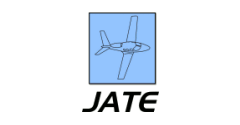Abstract
The cost of providing air transportation for passengers and cargo to, from, and within the European Union was scheduled to increase in 2012 due to the EU Emission Trading Scheme. The European Union (EU) has legislated that aircraft landing or taking off from EU airports are subjected to the Emission Trading System (ETS) and are levied a charge for the estimated amount of carbon dioxide (CO2) generated during the entire flight. Since direct measurement of CO2 emitted during flight is not practical, the EU carbon emissions are estimated using the amount of fuel consumed. CO2 is a greenhouse gas associated with detrimental environmental impacts. Transportation in the US contributed 31% of CO2 emissions and 26% of greenhouse gas emissions in 2010. According to the International Air Transport Association (IATA), aviation is responsible for 2% of global CO2 emissions, and currently represents a growing percentage. Reducing fuel consumption is the most effective way to reduce CO2 emissions, but operational changes, design changes, and use of alternative fuels are also effective. While ETS charges are controversial, the purpose of this paper is to discuss ETS and illustrate its inclusion in aviation financial considerations. This paper introduces aviation carbon ETS, discusses the impact of ETS on airlines, and presents a methodology to quantify the cost differences in fuel and EU ETS charges incurred by introducing a stop for flights into and out of the EU.
Recommended Citation
Johnson, Mary E. and Gonzalez, Alan
(2013)
"Effects of a Carbon Emissions Trading System on Aviation Financial Decisions,"
Journal of Aviation Technology and Engineering:
Vol. 2:
Iss.
2, Article 3.
Available at: https://doi.org/10.7771/2159-6670.1073


